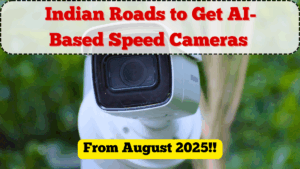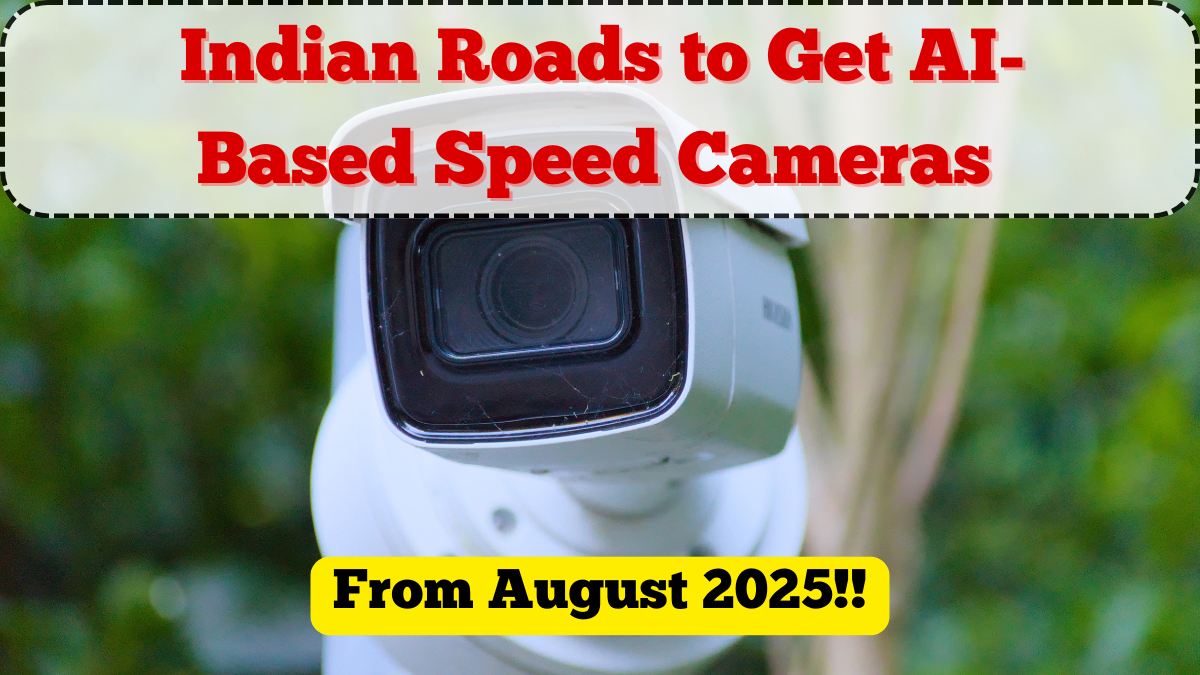India is taking a giant leap toward traffic automation and safer roads. Starting August 2025, the Ministry of Road Transport and Highways will deploy AI-enabled speed cameras across national highways and city expressways. This initiative aims to enforce real-time monitoring of over-speeding vehicles using smart surveillance and facial recognition systems. With a sharp rise in road accidents due to reckless driving, this technology-driven solution is seen as a long-term fix for improving AI road safety in India.
The AI cameras will be integrated into central databases and linked with FASTag and RTO systems, allowing authorities to auto-generate e-challans, track repeat offenders, and analyse vehicle movement patterns in real time.

How AI Speed Cameras Will Work
Here’s how the upcoming smart surveillance infrastructure will function across Indian highways:
-
Real-time vehicle speed detection using advanced sensors
-
Automatic number plate recognition (ANPR)
-
Facial recognition to identify drivers during violations
-
Instant e-challan generation via FASTag-linked data
-
Live video feeds monitored by AI for multiple violations (e.g., lane-cutting, signal jumping)
This level of traffic automation means even minor rule-breaking can now result in penalties—drastically changing how road laws are enforced.
Where the AI Cameras Will Be Installed First
The first phase of deployment will focus on accident-prone zones and high-traffic corridors:
| Highway / Location | Region | No. of Cameras (Phase 1) |
|---|---|---|
| Delhi–Meerut Expressway | North India | 120 |
| Bengaluru–Mysuru Highway | South India | 95 |
| Mumbai–Pune Expressway | West India | 100 |
| Kolkata–Durgapur Highway | East India | 80 |
| Chennai Outer Ring Road (ORR) | Tamil Nadu | 75 |
By December 2025, AI cameras are expected to be rolled out to over 500 locations nationwide.
Benefits of AI Road Safety Tech
-
Reduces human error in speed tracking and monitoring
-
Discourages repeat violations by maintaining violator records
-
Increases transparency in challan issuance
-
Improves emergency response by alerting nearest patrol units
-
Boosts data analytics for city traffic planning
This AI road safety program will also help reduce corruption and manual policing errors, ensuring better law enforcement.
What Drivers Should Be Aware Of
As the traffic automation system goes live, all vehicle owners are advised to:
-
Keep their FASTag accounts updated
-
Ensure vehicle registration details are correct
-
Follow posted speed limits strictly
-
Avoid lane-changing or signal jumping
-
Maintain valid PUC and insurance certificates
AI-based systems do not offer leeway for negotiation or leniency—every rule is digitally tracked and stored.
FAQs
When will AI speed cameras be active in India?
The first batch of AI speed cameras will be deployed from August 1, 2025, across major Indian highways.
What violations will the cameras detect?
These smart surveillance systems will monitor speeding, lane-cutting, red-light violations, and driving without helmets or seat belts.
Will I get an alert before a challan is issued?
No, e-challans will be auto-generated and sent to your registered mobile number and email linked to FASTag or RTO records.
Are these cameras linked to FASTag and RTO?
Yes, the entire traffic automation framework is integrated with FASTag accounts and regional transport offices.
How can I check if I’ve received a challan?
You can check for violations on the Parivahan Sewa portal or the mParivahan app using your vehicle registration number.
Click here to know more.
